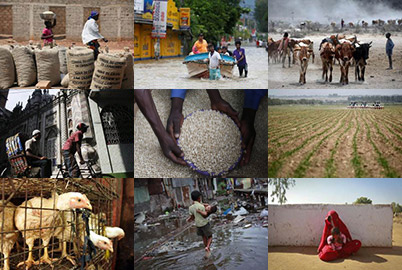* Any views expressed in this opinion piece are those of the author and not of Thomson Reuters Foundation.
225 million women and girls still lack access to modern contraception
It’s every woman’s basic right: the power to decide, freely and for herself, whether to have a child. Yet for far too many women and girls around the globe, this right is still out of reach. As the world celebrates International Women’s Day, it is sobering to realize that 225 million women and girls still lack access to modern contraception—and with it, the ability to control whether and when they become pregnant.
That’s where Family Planning 2020 (FP2020) comes in. A global partnership dedicated to expanding access to voluntary contraception for women and girls in the world’s poorest countries, we are committed to ensuring that the “and girls” part of that statement doesn’t become a forgotten footnote.
For an adolescent girl, lack of access to contraception can be especially catastrophic. When a young girl becomes pregnant—typically in the context of an early, forced marriage—it can change the entire course of her life. All too often it heralds an end to her schooling, an evaporation of her career prospects, an impairment of her health and the perpetuation of a cycle of dependency and poverty.
The numbers are staggering. According to the United Nations Population Fund (UNFPA), every year 2 million girls under age 15 give birth. Another 16 million pregnancies occur among 15-to 19-year-olds. Pregnancy and childbirth are a leading cause of death for these adolescents.
The risk of death for girls under 15 is double that for older teenagers and adult women; nearly 200 adolescent girls die every day from complications related to pregnancy. Pregnant girls under age 15 also face high rates of obstetric fistula, a devastating injury that can lead to incontinence, as well as shame and ostracism by their peers and communities.
The practice of child marriage is an obvious culprit: 90 percent of adolescent mothers are married. There is widespread agreement in the global community that child marriage is a human rights abuse that must end. But until it does, millions of girls will continue to be forced into marriage and motherhood long before they are ready, physically or emotionally. And these married adolescents often elude the reach of traditional public health programs. In a sense, they become invisible—forbidden to attend school or seek family planning services.
Often, their first encounter with a health worker is when they show up in the maternity ward.
There is a bright spot of hope. Family Planning 2020, our core partners and the broader international community are focusing as never before on the reproductive rights and needs of adolescent girls. Last month, the Every Woman Every Child stakeholder group met in New Delhi to discuss the emerging post-2015 version of the Global Strategy for Women’s and Children’s Health, launched by United Nations Secretary-General Ban Ki-moon in 2010. A key shift in the updated strategy, which will be launched in September, will be the recognition of adolescents as a distinct population with unique needs.
The change is not just semantic or symbolic. It reflects a new paradigm for the empowerment of women and girls in an era of sustainable development. Under the leadership of the Secretary-General, and with the technical guidance of the World Health Organization, Every Woman Every Child partners are crafting a global health strategy that envisions a whole-life cycle of wellbeing. Special attention is being paid to previously neglected groups, with the United Nations Population Fund playing a crucial role as champions for the rights and needs of adolescent girls.
Meeting the needs of these vulnerable young people will not be easy, and will require novel approaches to child brides who are not reached by reproductive health programs aimed at adult women or unmarried youths. Programs will need to be carefully designed to reach girls in isolated circumstances, help those who are pregnant for the first time and provide comprehensive antenatal care for young mothers.
Communities must be educated about the dangers of early and frequent childbearing, and cultural norms reshaped so that girls are empowered to use family planning.
It won’t be easy, but it’s absolutely necessary. And through the work of Family Planning 2020 and our government and civil society partners, it is attainable. Every girl has the right to live, to thrive, and to grow into a healthy woman. Giving her control over her fertility is the first step to giving her control over her destiny.
Beth Schlachter is interim Executive Director of Family Planning 2020 (FP2020), a global partnership that supports access for women and girls to contraceptive information, supplies and services.

